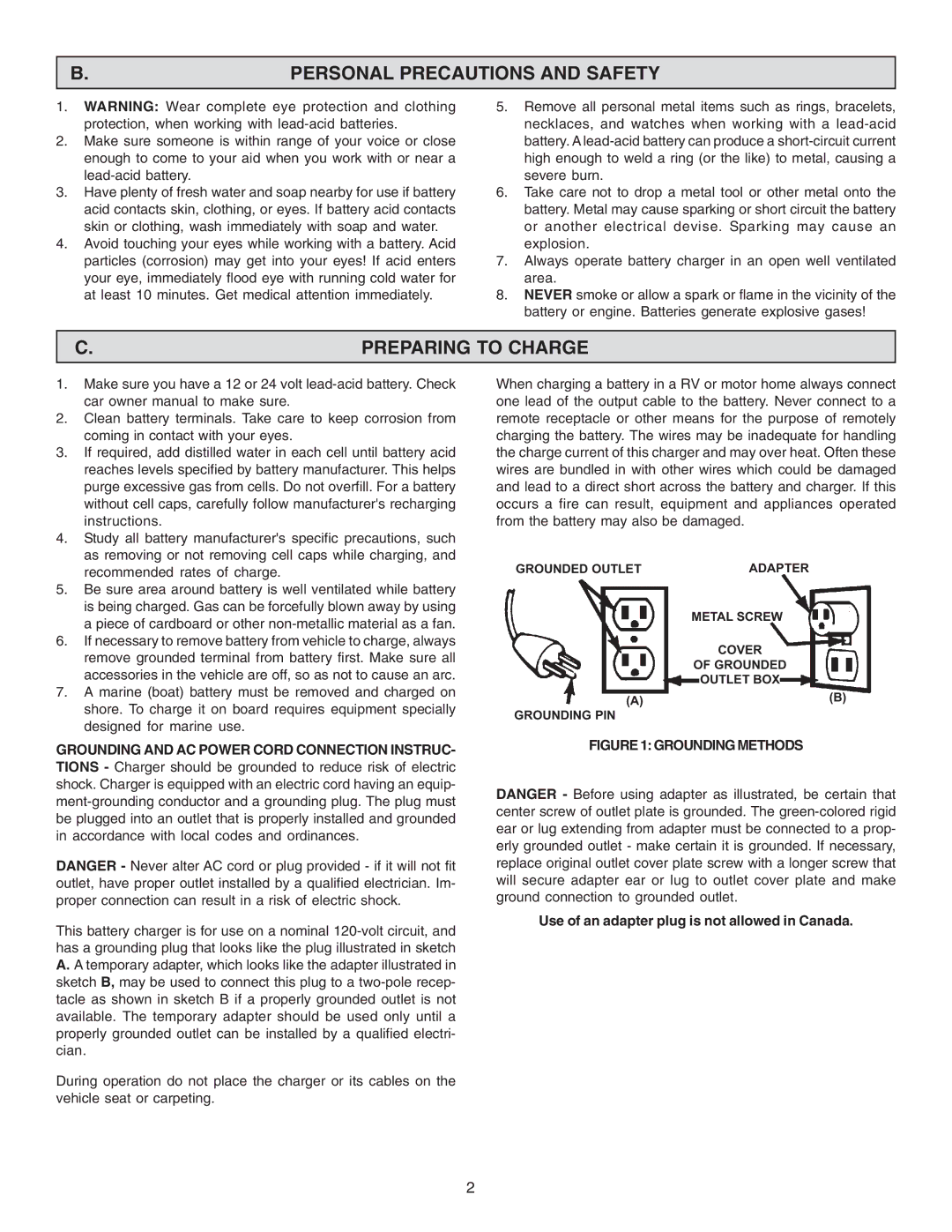SE-70MA specifications
The Schumacher SE-70MA is a versatile and powerful automotive battery charger that stands out in the competitive landscape of battery maintenance solutions. Designed for both professional and personal use, this model is particularly well-regarded for its ease of use, advanced technology, and robust feature set.One of the primary features of the SE-70MA is its microprocessor-controlled system, which allows for intelligent charging. This technology automatically adjusts the charge rate based on the battery’s condition, ensuring optimal charging while extending the lifespan of the battery. The charger offers a maximum output of 70 amps, making it suitable for a wide range of vehicles, including cars, trucks, SUVs, and even certain marine applications.
The SE-70MA supports both 6V and 12V batteries, which provides significant flexibility for users. Its compatibility with various battery types, including lead-acid, AGM, and gel cells, allows owners to use it for a diverse array of vehicles and applications. The charger also features multiple charging modes, including a fast charge option that quickly revives deeply discharged batteries, as well as a maintenance mode that is perfect for keeping batteries topped off during long periods of inactivity.
Safety is a key consideration in the design of the SE-70MA, and it incorporates several protective features. The charger includes reverse polarity protection, which prevents damage from incorrect connections, as well as overcharge protection to prevent battery damage from excessive charging. Additionally, the unit is equipped with a built-in cooling fan that helps dissipate heat during the charging process, ensuring longevity and performance reliability.
Another notable characteristic of the Schumacher SE-70MA is its user-friendly interface. The clear digital display provides real-time information about the charge status and battery information, enhancing usability. The lightweight and portable design further adds to its appeal, making it easy to transport and store when not in use.
Ultimately, the Schumacher SE-70MA is an excellent choice for anyone looking for a robust and reliable battery charger. With its advanced features, adaptability, and safety mechanisms, it caters to the needs of automotive enthusiasts, professionals, and everyday drivers alike. Its combination of technology and user-centric design makes it a standout choice for maintaining the health and efficiency of vehicle batteries.

